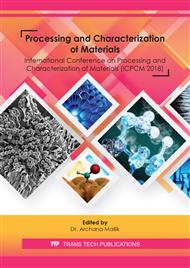p.55
p.64
p.77
p.84
p.91
p.97
p.106
p.114
p.121
Reduction in Surface Defect in Continuous Cast Slab through Intervention in Process Parameters
Abstract:
Occurrence of defects like crack on the surface of the cast products has long been recognized as a critical challenge for steelmakers in the continuous casting. Cracks on the surface can severely reduce yield and required further operations like salvage and scarfing. Depending on the severity of defect slabs can be diverted or in worst cases a slab can be rejected altogether if the defect cannot be removed by surface conditioning. Rourkela Steel Plant (RSP) of Steel Authority of India Limited (SAIL) produces continuously cast slabs as feed material for plate mills and hot strip mill. Sometimes the slabs produced through continuous casting are faced issues intermittently due to presence surface defects like midface longitudinal cracks (LC) and transverse edge crack (EC) etc. A systematic investigation of the operating parameters of these casters e.g. monitoring of oscillation parameters, slabs and mould flux, simulation and analysis of fluid flow inside mould, steel chemistry and role of dissolve gases in steel. Based on the investigation critical parameters responsible for crack formation have been identified and key areas identified where modification need to be done. Modifications has been done in terms of mould flux addition practice, optimization of the grade chemistry, optimization of process route, optimization of casting speed, checking of strand thermal profile, mould & machine allignment etc. It was observed that the crack incidences are significantly lower after the modifications were done.
Info:
Periodical:
Pages:
91-96
Citation:
Online since:
February 2020
Price:
Сopyright:
© 2020 Trans Tech Publications Ltd. All Rights Reserved
Share:
Citation:


